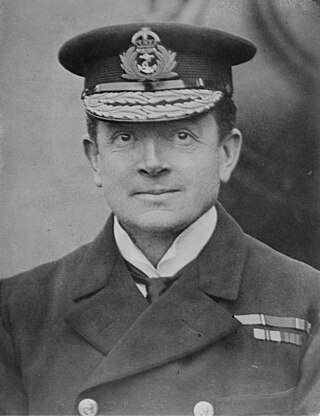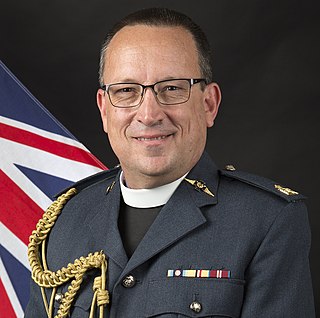
Admiral of the Fleet is a five-star naval officer rank and the highest rank of the Royal Navy, formally established in 1688. The five-star NATO rank code is OF-10, equivalent to a field marshal in the British Army or a Marshal of the Royal Air Force. Apart from honorary appointments, no new admirals of the fleet have been named since 1995, and no honorary appointments have been made since 2014.

Admiral of the Fleet Sir John Edmund Commerell, was a Royal Navy officer. As a junior officer, he was present at the Battle of Vuelta de Obligado in November 1845 during the Uruguayan Civil War. He also took part in operations in Sea of Azov during the Crimean War and went ashore with the quartermaster and a seaman, to destroy large quantities of enemy forage on the shore. After a difficult and dangerous journey they reached their objective – a magazine of corn – and managed to ignite the stacks, but the guards were alerted and immediately opened fire and gave chase. The men had difficulty in escaping, but they finally reached their ship and the lookouts later reported that the forage store had burned to the ground. He and his colleague, Quartermaster William Thomas Rickard, were awarded the Victoria Cross, the highest award for gallantry in the face of the enemy that can be awarded to British and Commonwealth forces.

Admiral of the Fleet The Honourable Sir Somerset Arthur Gough-Calthorpe, sometimes known as Sir Somerset Calthorpe, was a Royal Navy officer and a member of the Gough-Calthorpe family. After serving as a junior officer during the Fourth Anglo-Ashanti War, he became naval attaché observing the actions of the Imperial Russian Navy during the Russo-Japanese War and then went on to command an armoured cruiser and then a battleship during the early years of the 20th century.
John Green, is a Church of England priest and former Royal Navy chaplain. He was Chaplain of the Fleet, Director General of the Naval Chaplaincy Service and Archdeacon for the Royal Navy from 2006 to 2010. He was Archdeacon Pastor in the Diocese of Coventry from 2012 until his retirement in 2017.

Admiral of the Fleet Sir William Henry May was a Royal Navy Officer. As a junior officer he took part an expedition to rescue Commander Albert Markham who had got into difficulty trying to reach the North Pole via Smith Sound, the sea passage between Greenland and Canada's northernmost island, Ellesmere Island.

The Royal Air Force Chaplains Branch provides military chaplains for the Royal Air Force of the United Kingdom.
Raymond Harcourt Roberts was a Welsh Anglican priest and Royal Navy chaplain. He served as Chaplain of the Fleet and Archdeacon of the Royal Navy from 1980 to 1984.

Scott James Brown,, is a Church of Scotland minister and former Royal Navy chaplain. From 2010 to 2014, he served as Chaplain of the Fleet and was therefore the senior military chaplain in the Royal Navy.

Jonathan Paul Michael Chaffey is a British Church of England priest and former military chaplain, who served with the Royal Air Force. He serves as Archdeacon of Oxford in the same diocese; from 2014 to 2018 he served as the Chaplain-in-Chief and head of the Royal Air Force Chaplains Branch. He previously served as Deputy Chaplain-in-Chief.

Ian James Wheatley, is a British Anglican priest and former Royal Navy officer. From 2014 to 2018, he has served as Chaplain of the Fleet, the senior military chaplain of the Royal Navy: he had also served as Deputy Chaplain of the Fleet and Principal Anglican Chaplain from 2012 to 2014.
Martin George Poll, is a British Church of England priest and former Royal Navy chaplain. Since 2012, he has been the Canon Chaplain of St George's Chapel, Windsor Castle, and Domestic Chaplain to the Queen. From 2010 to 2012, he was Archdeacon for the Royal Navy and Principal Anglican Chaplain of the Royal Navy Chaplaincy Services.
The most senior Anglican chaplain in each branch of the British Armed Forces is made an archdeacon in the Church of England. Respectively they are titled the Archdeacon for the Royal Navy, the Archdeacon for the Army, and the Archdeacon for the Royal Air Force. As an archdeacon, they are styled The Venerable.
John Blackburn, was a British Anglican priest and chaplain. He served as Archdeacon for the Army from 1999 to 2004 and Chaplain General of the Royal Army Chaplains' Department from 2000 to 2004. Before and after his service in the British Army, he was a parish priest in the Diocese of Monmouth of the Church in Wales.
Barry Keith Hammett, is a Church of England priest and former Royal Navy chaplain. He was Chaplain of the Fleet, Director General of the Naval Chaplaincy Service and Archdeacon for the Royal Navy from 2002 to 2006.
Michael William Bucks was a Church of England priest who served as Royal Navy chaplain. He was Chaplain of the Fleet, Director General of the Naval Chaplaincy Service and Archdeacon for the Royal Navy from 1993 until shortly before his death.
John Cox Cox-Edwards (1839–1926) was a Church of England priest and chaplain in the Royal Navy who rose to be Chaplain of the Fleet from 1888 to 1899.
Charles John Eyre Peshall, CBE, DSO, KHC (1881–1957) was a Church of England priest and former Royal Navy chaplain. He was Chaplain of the Fleet, director general of the Naval Chaplaincy Service and archdeacon for the Royal Navy from 1933 to 1935.

Air Vice-Marshal John Raymond Ellis, is a British Anglican priest and former police officer. Between July 2018 and July 2022 he served as Chaplain-in-Chief of the Royal Air Force Chaplains Branch and Archdeacon for the Royal Air Force. He had worked as a police officer and then in parish ministry in the Diocese of St Edmundsbury and Ipswich from 1997, before joining the Royal Air Force Chaplains Branch in 2004.

Martyn John Gough was a British Anglican priest, who served as a military chaplain and was Chaplain of the Fleet and Archdeacon for the Royal Navy from 2018 until his retirement in 2021. At the time of his death he held the voluntary position of National Chaplain to the Royal British Legion.

Andrew Hillier is a British Anglican priest: he has been Chaplain of the Fleet and Archdeacon for the Royal Navy since 2021.














